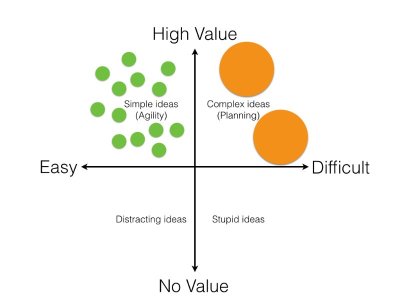How to use design thinking to overcome strategic inaction
The single biggest impediment to strategic growth is inaction. Second to this is moving with the wrong strategies. However, inaction is the biggest blockage. This can be for a variety of reasons, including the cost to implement potential strategies being high or potentially risky. There can also be complexities in providing a clear guarantee of success. With such limitation can come delays in implementation of changes or often making no change.
The design thinking process is about overcoming fear and being courageous in implementing changes that will have an impact. This is achieved by …
- defining the issue and what success will mean upfront;
- conducting research to understand consumers; and
- using research as a platform for ideation, prototyping and iteration.
Research is a critical foundation of design thinking, throughout the entire process.
- ensuring a robust understanding of customers and where gaps and opportunities lie.
- taking an active role in guiding strategies down the right path.
- evaluating, assessing and refining prototypes.
- monitoring and identifying opportunities to improve.
However, the distinction between traditional market research and design thinking is more often that design thinking is extended and an ongoing loop from…
- defining the issue;
- initial research;
- ideation;
- prototyping;
- selection;
- implementation; and
- continuous learning and enhancement.
Further to this, design thinking generally places an emphasis on rapid building of a larger number of smaller ideas, rather than a smaller number of big ideas typically the case in traditional strategic planning.
Agility is the key, and this only comes from being clear about filtering ideas as to their strategic value (e.g. potential ROI, positioning for the future etc) and ease of implementation (e.g. cost, time, resources etc). A larger number of simple ideas, and a smaller number of complex – medium to long term – ideas. And, importantly can the complex ideas be dissected into simple ideas?
Design thinking has a focus on quicker implementation. With this, comes the ability to:
- Fail fast – and move on.
- Learn quickly – and evolve.
Too often those big, complex ideas take so long to become reality that the opportunities and environment have since evaporated. Just think about how much technology, shopping, media etcetera have changed in the past year or two.

Design thinking provides powerful tools to focus ideas generation away from the complex, distracting and stupid. Design thinking is about being consumer-centred, strategic and agile. Always learning and iterating towards the strategic goal. Failing quickly and efficiently is important in design thinking and with this there is a reduction in risk.
The collaboration inherent in design thinking is also viewed as a powerful aphrodisiac to strategic courage, ensuring great team engagement in finding and implementing solutions. Design thinking is an empowering process to driving change by combining a human-centred approach and leveraging diverse team skills beyond marketing, design and strategy to drive change.





